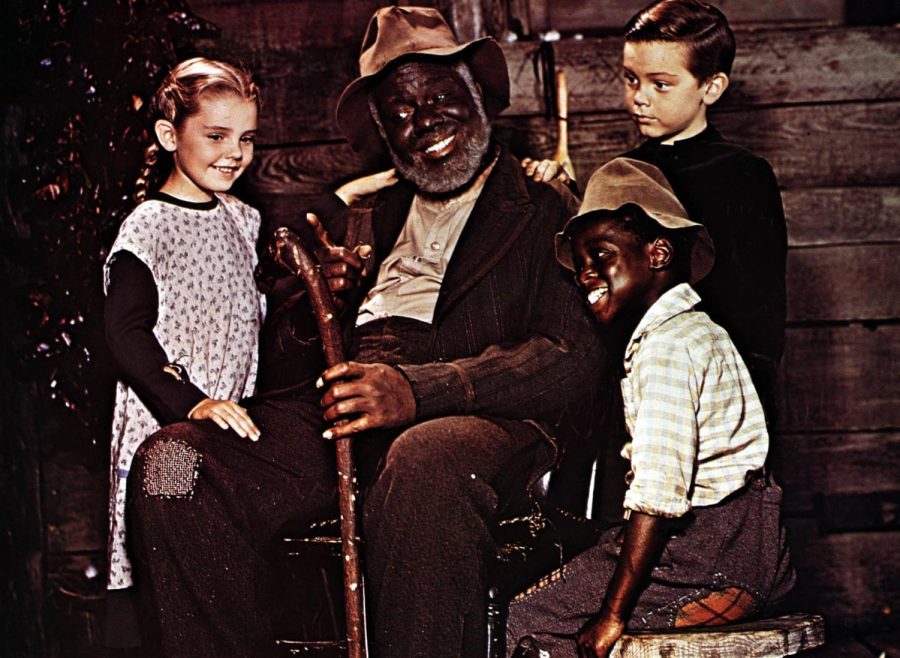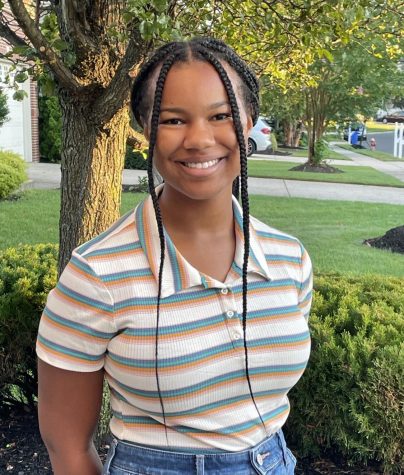The problematic history of Disney
Stereotypes and racism have an unfortunate long history in the popular entertainment powerhouse
A screenshot from Disney’s “Song of the South” (1946)
February 18, 2022
We all like to think of Disney as a magical place where dreams can come true. And even if you never visit you can still have a bit of that magic through their multiple TV shows and movies. However the happy and all inclusive Disney we have today was not always the case. Throughout Disney’s history, it has included — and perpetuated — a number of deeply stereotypical and even racist ideas and perspectives.
Disney’s portrayal of different culture has long been problematic. The movie “Peter Pan” features a stereotypical depiction of Native Americans ,and even a song called “What Made Red Man Red.” Other movies, such as “Dumbo” and “Lady and the Tramp,” also have stereotypical characters and cultures.
Disney’s portrayal of Black people throughout history has also been controversial. The movie “The Princess and the Frog” was great for young black girls like me; to see someone who looks like them live out their dream was meaningful and important. However, Tiana spends half of the movie as a frog. This is not the first time Disney has turned a Black character into an animal to make them more relatable to the audience. “Soul” also had a Black lead, but he turned into a “soul” in the afterlife, and then later a cat, again spending very little time as himself in his Black body. Although we see him as his human self more, he is inhabited by another soul, “22,” who is voiced by a white actress. Many advocates call on Disney to make a big mainstream production in which a Black lead stays a human for the whole movie. Although “The Princess and the Frog” and “Soul” were a step in the right direction, it appears that more action needs to be done.
Also not many people know this, but Disney at one point had cartoon characters doing blackface. According to Mel Magazine, in 1928, in the infamous “Steamboat Willie,” a short cartoon featuring an early Mickey Mouse, “Mickey does a brief Al Jolson blackface routine, as he sings, “Mammy, Mammy!,” quoting the most famous line from “Mammy,” the most famous blackface song in American film.” The article also says “Mickey’s Mellerdrammer” has blackface in it: “Rather than burnt cork, Mickey uses an exploded firework to apply an unmistakable fresh coat of comical blackness.”
Disney’s utilization of racist tropes in history is probably most pronounced in its 1946 film, “Song of the South.” This movie portrays a former slave still living on a plantation who befriends a young white boy, which he entertains through stories about Br’er Rabbit. The tales of Br’er Rabbit are real in the sense that they have been passed down by African-Americans when working on plantations. The movie is difficult for a number of reasons. For one, it perpetuates the notion of the “happy slave” who liked working on the plantation and was even friends with his master. It also comes off as a slap in the face to different stories and narratives rooted in the oral tradition for many Black communities; it essentially bastardizes this folklore for white audiences. The film is so troublesome, that Disney+ does not offer it on its streaming services.
To address these issues, the Disney+ app and website now provide a content advisory saying that these movies have “negative or outdated depictions and/or mistreatment of people or cultures,” which now pops up when you begin a new film. The advisory also acknowledges that these portrayals “were wrong then and they are wrong now,” and does not shy away from owning this problematic history. Nevertheless, many view the warning as too little too late and still have concerns for Disney’s future.
The Disney we know now is very different from what it was like in the past. I still enjoy Disney movies and TV shows, but it is important to know about its history. The company has come a long way and now includes more diversity. Including Latino, Asian, Pacific islander and other indigenous voices is a step in the right direction, but I am still waiting for a movie that better tells stories from the Black community.







